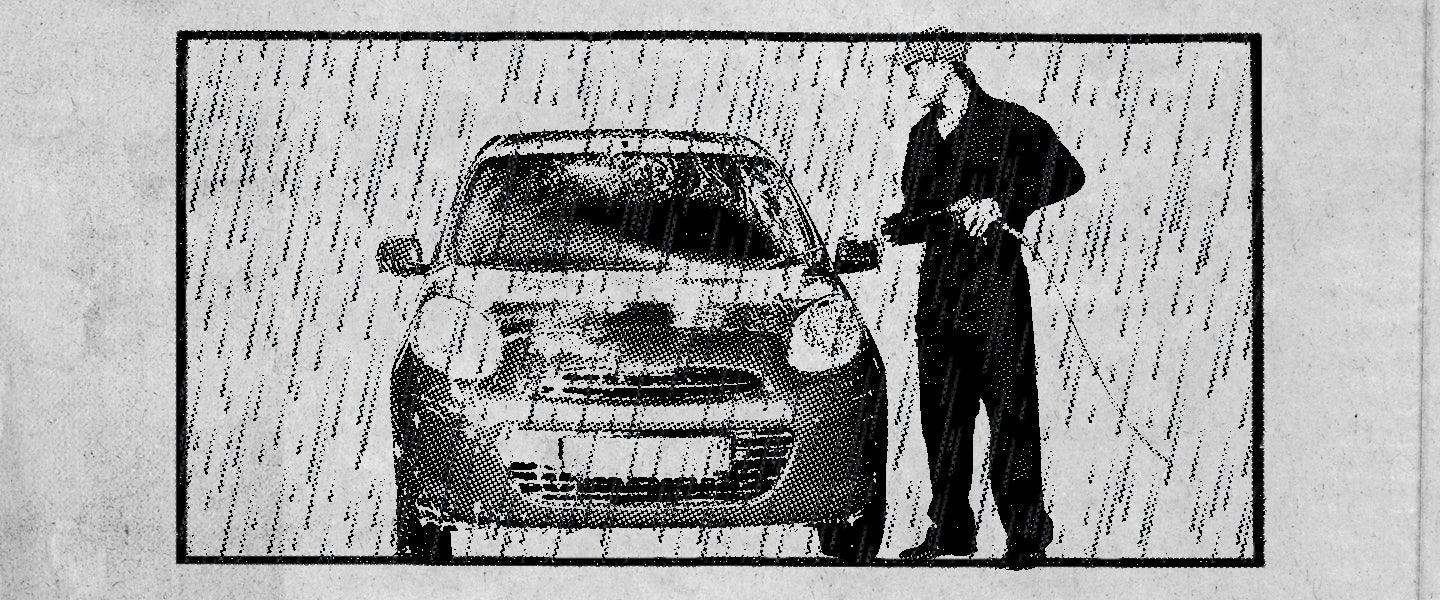If the modern automobile had a status on Facebook, it would undoubtedly be “It’s complicated.” With their computer-controlled fuel injection systems, continuously variable transmissions and three-phase four-pole AC induction motors, the days when every Tom, Dick or Harry could wrench on their ride seem long gone. So let us help — especially with the seemingly mundane stuff that if not done properly, your dad and/or his favorite mechanic vowed would ruin your car forever. Because when it comes to cars — and this column — no question is too dumb.
I just moved to Minnesota from Southern California for work, and yikes, I’m a little worried about the winters here. I’ve heard that, between the snow, ice and road salt, my car is likely in for it once the temperature drops below freezing. How am I supposed to keep my car clean when the weather is so inhospitable?
There are two schools of thought when it comes to taking care of your car’s exterior during the long, cold winter months. The first, obviously, is to put in the hard work and diligence necessary to keep it washed — and maybe more importantly, dry — when the elements are against you.
The second is doing what a lot of people do when the temperature drops to zero, and locking yourself indoors, everything else be damned. “I don’t really care that much because I’m a gross, lazy fuck,” my Chicago-based friend, Christopher, tells me. “It gets so nasty anyway; if you wash it, it’ll only stay clean for only a couple of days. It’s a futile effort.”
But let’s assume, for a moment that, being new to your surroundings, you’re not going to do what you’ll likely do a few winters from now and just give up. Just how diligent and hard-working do you need to be?
“You should wash your car after every storm,” says Victor, an employee at a car wash on Chicago’s Gold Coast. “The most important areas to wash are the wheels and the undercarriage, because that’s where dirty snow, salt and sand are likely to accumulate, and also where rust is most likely to form. And in wet, freezing weather, rust is your car’s number one enemy.”
If that sounds like a lot of washing, that’s because it is. If you’re taking your car in whenever there’s new snow on the ground, you might be washing it as much as two or three times a week. I ask Christopher what he thinks about that. “Once a week seems super aggressive,” he responds. “If you park your car outside, there’s no benefit, because it’s just going to get nasty a day later. Every three weeks seems reasonable to me.”
Considering the sources — one, a guy who makes money washing cars, and the other, a self-described “lazy fuck” — more likely once or twice every couple of weeks, or when there’s significant debris build-up in and around the wheels and bottom of your car, makes the most sense to me (and would seem like more than enough to keep the rust monster at bay).
The next question, of course, is, how do you wash it when it’s freezing out?
The easiest, but most expensive option is to take your ride to a car wash, or if you’ve really got money to burn, to hire a service to come to your home and let them figure it out. But not everyone has beaucoup bucks, and so, you should really learn how to wash your car yourself in Siberian-like temperatures and Antarctic-like snowbanks.
The first thing, though, is to ignore those Siberian-like temperatures‚ in that, you should only wash your car in weather that’s 40-degrees Fahrenheit or warmer, ideally during daylight hours. Otherwise, the water you’re washing with is going to freeze. If that happens, you better have warm clothes and an ice scraper handy, because you’re going to be stuck outside for a while just trying to get the door open. You can also consider turning the car on and letting it idle for a bit, or better yet, driving around the block a few times to warm it up. That should at least buy you some time to dry off the car before the water freezes.
And dryness is the name of the game. Ice is bad enough, but when you mix it with corrosive chemicals like the ones they use to keep the roads clear, you’re really going to have a recipe for corrosion. And a rusty car isn’t simply an eyesore, it’s a resale-value killer, because all those rust spots need to be fixed or replaced, lest they eat into the frame of the car and make it unsafe to drive.
Oh, and one last pro tip, courtesy of my friend Christopher: “De-icing windshield wiper fluid is crucial. The huge temperature difference between the inside and outside of your car when it’s cold out leads to crystallization on the windshield, so you always want to make sure your reservoir is topped off. Plus, occasionally you’ll get sprayed with dirty snow by another car on the highway, or when you’re stopped at a curb. So sometimes I’ll use my wipers every 30 seconds or so.”
After all, the only thing worse than a dirty car is driving blind in the middle of a snow storm.

